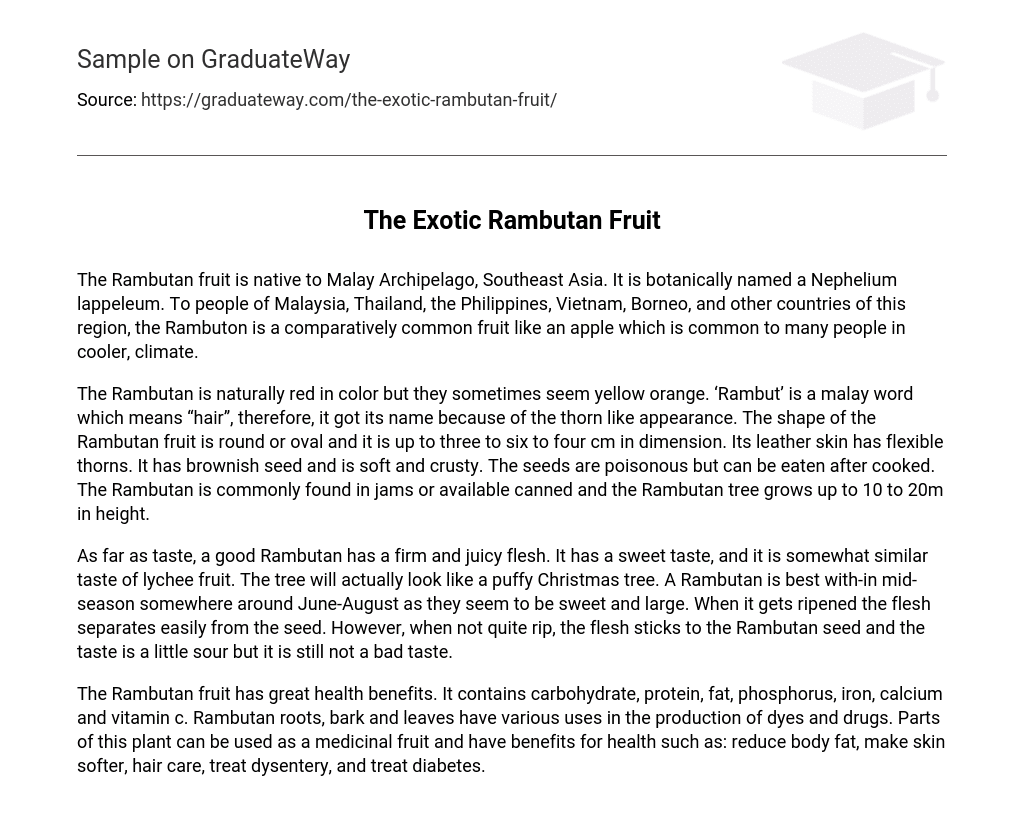The Rambutan fruit, known as Nephelium lappeleum in scientific terms, originates from the Malay Archipelago in Southeast Asia. It is a highly favored fruit in Malaysia, Thailand, the Philippines, Vietnam, Borneo, and neighboring areas. Just like apples are popularly enjoyed in colder climates, Rambutan holds significant recognition among individuals residing in this particular region.
The Rambutan is commonly red, but it can also be yellow-orange. It received its name from the Malay term ‘Rambut’, which means “hair”, due to its thorn-like appearance. The Rambutan fruit has a round or oval shape and measures about three to four cm in size. Its skin is covered in pliable thorns. The seed inside has a brown color and a soft, crusty texture. Although the seeds are toxic, they can be consumed after being cooked. Rambutan is often used in jams or available in canned form. The Rambutan tree can reach heights of 10 to 20m.
A ripe Rambutan has a firm and juicy flesh with a sweet taste, similar to lychee fruit. The tree has the appearance of a puffy Christmas tree. The optimal time to savor a Rambutan is during mid-season, typically from June to August, when they are both sweet and substantial in size. When completely ripe, the flesh easily detaches from the seed. Yet, when not fully ripe, the flesh adheres to the seed and possesses a mildly tart flavor that is still enjoyable.
The Rambutan fruit contains various nutrients like carbohydrates, proteins, fats, phosphorus, iron, calcium, and vitamin C. The roots, bark, and leaves of the Rambutan plant are also used for dye production and pharmaceutical purposes. Moreover, specific parts of this plant have medicinal properties that help reduce body fat, improve skin texture, support hair care, treat dysentery, and manage diabetes.





